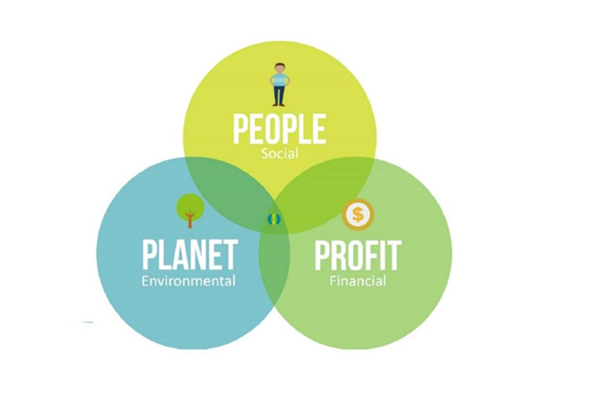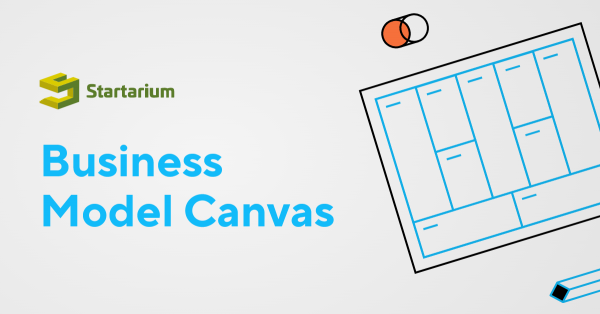The general goal of a sustainable business strategy is to positively impact the environment, society, or both, while also benefiting shareholders. Business leaders are increasingly realizing the power of sustainable business strategies in not only addressing the world’s most pressing challenges but driving their firms’ success. However, defining what sustainability means, solidifying clear and attainable goals, and formulating a strategy to achieve those goals can be daunting. One common way to understand a business’s sustainability efforts is using a concept known as the triple bottom line.

The Triple Bottom Line
The triple bottom line was first fully explained by John Elkington in his 1999 book, "Cannibals With Forks: The Triple Bottom Line of 21st Century Business." It's a bottom line that continues to measure profits, but also measures the organization's impact on people and on the planet. The triple bottom line is a way of expressing a company's impact and sustainability on both a local and a global scale.
Decades later, it has given rise to a number of responsible business models, frameworks, and operational methodologies from Social Return on Investment (SRoI) to Environmental, Social and Corporate Governance (ESG), as well as proving an early inspiration for the rise of the sharing and circular economies.
Historically, businesses operated in service solely to their financial bottom line. However, as a result of the triple bottom line theory and application, some businesses began to realize the connection among environmental health, social well-being and the organization’s financial success and resilience.
Today, organizations use it to get an accurate, well-rounded perspective of their operations and relationships with the environment, community, and economy. Certified B Corporations help the concept of the triple bottom line come to life. B Corporations are a relatively new type of business, legally required to consider impacts on all stakeholders including employees, customers, suppliers, community, and environment. Their mission is to become a community of leaders who drive a global movement of people using business as a force for good.
Triple bottom line theory expands business success metrics to include contributions to environmental health, social well-being, and a just economy. These bottom line categories are often referred to as the three “P’s”: people, planet, and profit.

- The triple bottom line is a transformation framework for businesses and other organizations to help them move toward a regenerative and more sustainable future.
- Tools within the triple bottom line help to measure, benchmark, set goals, improve, and eventually evolve toward more sustainable systems and models.
- The triple bottom line illustrates that if an organization is only focused on profit—ignoring people and the planet—it cannot account for the full cost of doing business and thus will not succeed long term.
While there are three categories that make up triple bottom line theory, it is important to remember each category is not siloed. Through a systems theory view, people, planet, and profit are all interconnected.
People (social capital)
The “people” of the triple bottom line refers to the impact that a business has on people within the business (employees) and people outside of the business (the community). Your business practices should address the well-being of and benefit the people in which the business operates. All stakeholder interests are interdependent via fair wages, fair-trade practices, safe work environments, retention rates, ethical standards, local hiring, local sourcing, local participation, local charitable contributions and contributions to community living standards.
Planet (natural capital)
The “planet” of the TBL refers to environmental aspects. You don’t have to be a “green” business to practice good environmental actions. Entrepreneurs can enhance the natural order and minimize their environmental impact in a wide variety of ways that are not only cost-effective, but easy to implement and adopt. From small efforts like: managing energy consumption, employing eco-friendly materials, ‘recycle, reduce, reuse’; the use of post-consumer materials, managing water consumption, minimizing the amount of waste to landfill to more substantial efforts like: reducing waste from packaging and determining the true environmental cost of manufacturing from harvesting raw materials to the disposal by the end user, entrepreneurs can make a difference and influence their supply chain to do the same. Compromise can often be found somewhere in the middle with some creativity.
Profit (capital)
The “profit” of the TBL refers to the economic value created by your business and enjoyed by the host society. It is your income and expenditures, taxes, business climate factors, employment and business diversity factors as well as the economic impact your business has on society. It is not just about the internal profit made by a company.
Your business matters and affects the community in which you operate. Don’t think just because you are a small business or an entrepreneur. TBL philosophies, methodologies and practices don’t apply to or affect you. It can be adapted to and executed within smaller operations. Every step you take to incorporate a shift towards the TBL is a small contribution towards a better place in which we all benefit.
Is the Triple Bottom line for you?
The Triple Bottom Line is essentially a reporting system. Of itself, it doesn't actually improve the company's impact on people or the environment, any more than the action of producing a set of management accounts would affect profits.
However, it can be used to drive improvements in the way an organization impacts people and the environment by helping entrepreneurs focus on what they need to do to improve all of the bottom lines, and keeping this work high on their agendas.
While you may or may not consider the Triple Bottom Line appropriate for your project, it makes sense to recognize the way in which the workplace is changing, and consider whether you need to adapt your approach to business to reflect this.
If you decide to explore the concept further, start out by researching what other entrepreneurs and established businesses are doing to make positive changes. Looking at the steps they've taken will save you time brainstorming on ways to improve your own business. Some examples from different industries include:
- An international shipment and packaging company has taken drastic steps to reduce its ecological footprint, and currently has about 30 percent of its stores using renewable energy.
- An ice cream business has set a goal to reduce its carbon dioxide emissions by 10 percent over the next few years. It also has started investigating more environmentally friendly ways to package its ice cream, and plans to cut waste by at least 1,000 tons.
- A coffee company only buys its beans from farmers who grow coffee in an environmentally friendly manner, and it takes pains to ensure that all its workers are treated fairly, and receive a living wage for their skills.
- A computer company focuses a lot of its community efforts towards training and education programs. It helps underprivileged kids by giving them access to technology, and has goals to recycle 60 percent of its annual waste.























